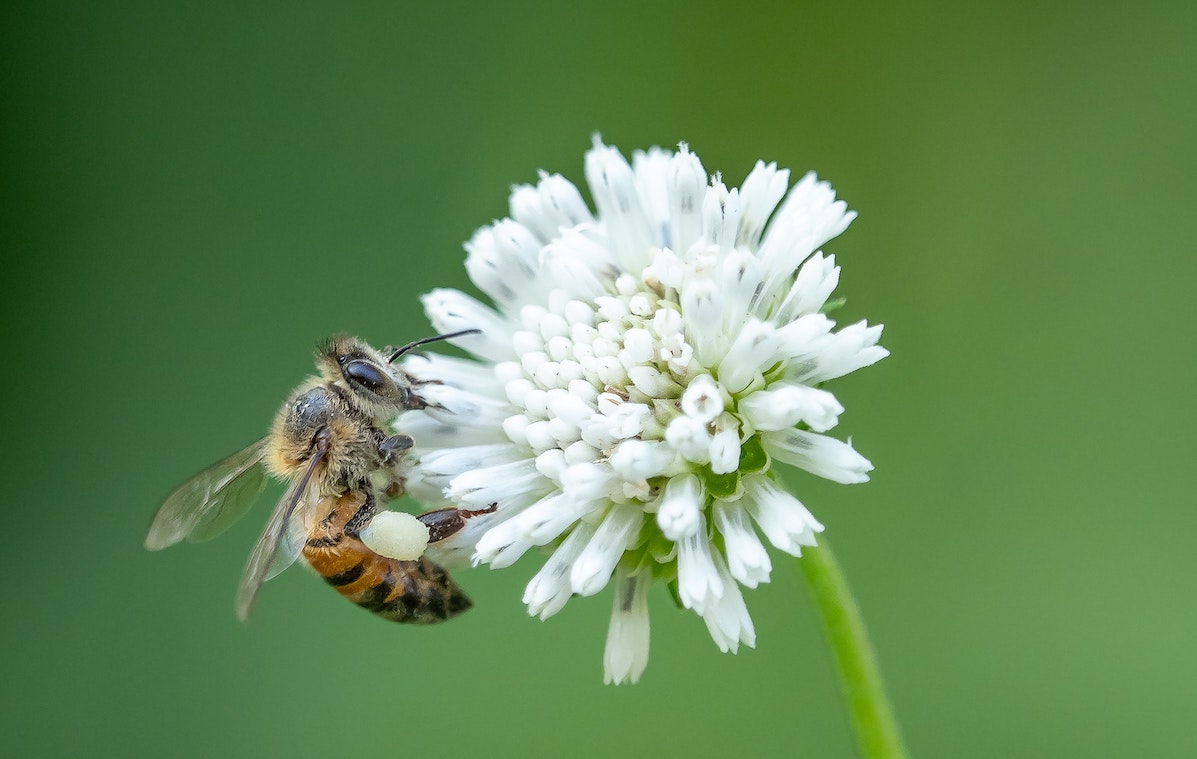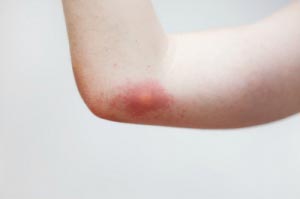Sometimes the smallest thing can be the biggest problem. One of these tiny problems comes in the form of insects—specifically stings. Even if you are not severely allergic to bee or insect stings, it can still be an annoyance with some people experiencing swelling and itching of the site. Whether you are at home in the garden, out for a picnic, or camping and hiking, you will want to find some effective relief and learn sting treatments and remedies.
How Does the Sting Cause Pain?
The stinger on some insects (like a honeybee) is detachable, meaning that it gets pulled out, along with part of the rear end when it stings you. This causes the insect to die, but you will continue to get venom pumped into your skin if you do not remove this entire piece. One important fact to take note of is that when you get stung, you should never use tweezers to remove the stinger or press it in any way. This just releases more venom into the skin, which can in some cases cause damage to the muscle tissue. Instead, you should use a credit card or similar object to scrape the stinger out.
Steps for Sting Treatment
The first thing you should do for sting treatment after removing the stinger is to wash the area with soap and water to prevent any infection. Applying ice to the area to bring down the swelling is also effective. Make sure that you check for any signs of an allergic reaction if you have never been stung before. It is also a good idea to call someone to be with you just in case you do start to experience symptoms and need some help getting to the hospital.
Symptoms of Allergic Reaction from Stings
The first thing you will notice is that you start to swell up in places like your eyelids and hands. You will have difficulty breathing and may start to wheeze. Developing a hive-like rash is also common. Some people get dizzy and faint, while some experience nausea and vomiting. You will have difficulty breathing as you go into anaphylactic shock and your airways will start to close up. If you start to feel any of these symptoms coming on, get to an emergency room right away, as you won’t know the extent of your allergy.
If you just get stung and have no significant problems, you will want to apply some form of herbal bee sting treatment or one of many natural sting remedies to get rid of pain, reduce the swelling and cure the sting.
Top 5 Choices for Sting Treatment
For fast-working cures that make use of all-natural ingredients including herbal treatments, you should have a look at the absolute best remedies to ensure that you or a loved one knows how to treat a sting instantly.
1) Lavender Oil—This essential oil is supposed to neutralize the venom immediately.
2) Garlic Cloves—These are highly regarded for their pain relief properties. Just crush a clove and press the juices onto the area of the sting.
3) Baking Soda—Mixed with water, this paste will draw out the venom.
4) Apple Cider Vinegar—This will reduce pain and minimize swelling also helping to draw out the venom.
5) St John’s Wort Oil and Bentonite Clay—With these two ingredients you make a paste and apply liberally to apply. The clay will draw out the venom while St John’s Wort will reduce the swelling and pain.
How to Cure a Sting with Herbs and Plants
Certain plants have healing properties that are very effective as sting remedies.
1) Calendula—This flower is very safe and used in natural baby products. To heal the sting, simply crush enough of the flowers to produce a liquid which you then apply.
2) Plantain—This is a common weed that is found in and around most homes. You crush up some of the leaves in your teeth or strip the broad leaves in half and apply the juices to the sting. This is one of the most effective bee sting remedies that will work in about 5 minutes.
3) Basil Leaves—These can also be rolled and crushed to release the juices, and will reduce pain and swelling.
4) Bee Balm —These leaves are prepared in the same way as the other plants and applied to the sting.
Comparisons
Looking at the various bee sting remedies you can see that some of the most effective methods are Plantain, Calendula, and then the Lavender oil, St John’s Wort oil, and Garlic cloves, as well as the oldest and most popular method of applying baking soda. If you are looking for a quick fix that will completely cure the sting, then you must look at these treatments, however, if these products are not available, you should assess how bad the sting is, and find appropriate sting treatments according to pain and swelling. Some other cures for pain include using parsley, papaya, a moistened tea bag, toothpaste (the spearmint and peppermint work better than others), mud, and even meat tenderizer made into a paste with water. Other methods that have been tried and tested include using vinegar, tobacco, and aloe vera.
With these and many other cures you can find when outdoors or from your picnic basket including peanut butter and honey, strangely enough, you can easily and effectively cure a sting. You don’t need to rely on chemicals and commercial products that might produce negative side effects. Simple is always best and whatever nature throws at us whilst enjoying the outdoors, we can easily counteract with other natural items.

